2020-2025
Gregory L. Fenves
Chancellor and President Emeritus
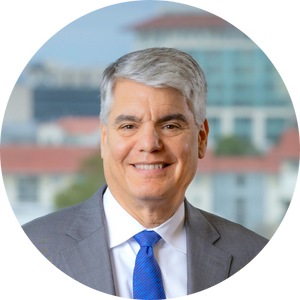
Gregory L. Fenves joined Emory as its 21st president in 2020 and led the university through a remarkable period of growth that demonstrated the dynamism and resilience of the institution. Navigating the challenges of the COVID-19 pandemic, Fenves directed the deployment of measures to safeguard the health of the campus community while advancing the Emory mission. He revitalized and expanded the “One Emory” strategic framework, uniting the university's schools and departments under a shared vision to elevate Emory as a first-choice destination for students and faculty, a leader in research, a thriving and innovative health care system, and a vital partner to the Atlanta community.
Under his leadership, Emory launched the 2O36 Campaign — the most successful fundraising effort in university history — generating record-breaking support focused on student success, faculty eminence, and research excellence. Reflecting his career-long commitment to access and affordability, Fenves expanded the Emory Advantage program, eliminating need-based loans for domestic undergraduate students and replacing them with grants and scholarships.
During his tenure, Emory achieved new milestones including record applications for undergraduate admissions; the launch of the Student Flourishing initiative and the formation of the Pathways Center to focus on student outcomes; the launch of the AI Humanity initiative and the cluster hiring of national AI faculty researchers; strengthening alignment between the university and Emory Healthcare, the premier academic health system in Georgia; and the surpassing of $1 billion in annual research expenditures.
Fenves now serves as Emory’s sixth chancellor.
Prior to joining Emory, Fenves served The University of Texas at Austin as dean of engineering, then as executive vice president and provost, and, finally, as the university’s 29th president. Before UT Austin, he was an engineering professor at the University of California, Berkeley for 20 years, earning numerous national awards for research excellence. He received a bachelor of science degree in civil and environmental engineering from Cornell University and earned a master’s degree and a PhD in civil engineering from the University of California, Berkeley.
In 2014, Fenves was elected to the National Academy of Engineering. He is a fellow of the American Association for the Advancement of Science, the American Society of Civil Engineers, and the Structural Engineering Institute.

2016–2020
Claire E. Sterk
Charles Howard Candler Professor of Public Health
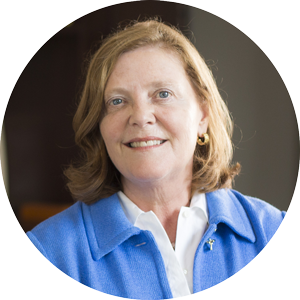
A leading international scholar in the fields of public health and anthropology, Claire E. Sterk served as Emory’s sixth provost and executive vice president for academic affairs.
In June 2016, the Board of Trustees unanimously selected Sterk as Emory's 20th president, effective September 1, 2016. As provost of Emory since 2013, Sterk brought a great range of academic and administrative experience to her roles at the university. A senior member of the provost's office since 2005 and a faculty member in public health since 1995, she has additional faculty appointments in anthropology; sociology; and women’s, gender, and sexuality studies.
An innovative and game-changing higher education leader, Sterk made significant gains for the university, deepening Emory’s ties with the city of Atlanta and launching a strategic framework designed to unify the university’s nine schools and colleges under a shared mission of discovery and service for the common good. Throughout her career, she has emphasized the choices and responsibilities of research universities and their real-world impact, especially on those whom society historically has marginalized.
Her primary research interests are addiction, mental health, and HIV/AIDS, with a focus on community-based interventions. She is the author of three books and more than 125 articles and book chapters. A member of the National Academy of Medicine and the American Academy of Arts and Sciences, Sterk is also a fellow of the Society for Applied Anthropology.
A native of the Netherlands, Sterk holds a PhD in sociology from Erasmus University in Rotterdam and a doctorandus degree in medical anthropology from the University of Utrecht. She retired as university president in August 2020 and took a sabbatical before returning to the faculty as Charles Howard Candler Professor of Public Health.

2003–2016
James W. Wagner
President Emeritus
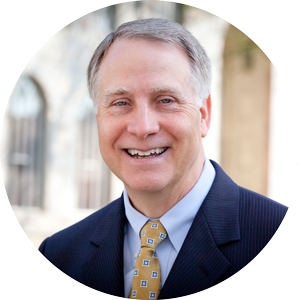
James W. Wagner presided over a record-breaking comprehensive campaign that raised $1.69 billion and led Emory’s first strategic plan, Where Courageous Inquiry Leads.
Wagner, an award-winning teacher and scientist, served as president of Emory University from 2003 to 2016. Born and reared in Maryland, he earned his bachelor’s degree in electrical engineering in 1975 from the University of Delaware and a master’s degree in clinical engineering in 1978 from the Johns Hopkins University. In 1984 he completed his PhD degree in materials science and engineering from Johns Hopkins. Following a distinguished tenure on the faculty of Johns Hopkins, he served as dean, provost, and interim president of Case Western Reserve University.
Throughout his administrative career, Wagner worked closely with faculty, students, alumni, and staff to enhance the undergraduate educational experience, grow research, and foster more effective partnerships among the academy, government, and industry. Out of a firm devotion to the ancient university mission of liberal education, he forged collaborations among a diverse array of schools and programs, ranging from the arts and sciences to the professional schools.

1994–2003
William M. Chace
President Emeritus
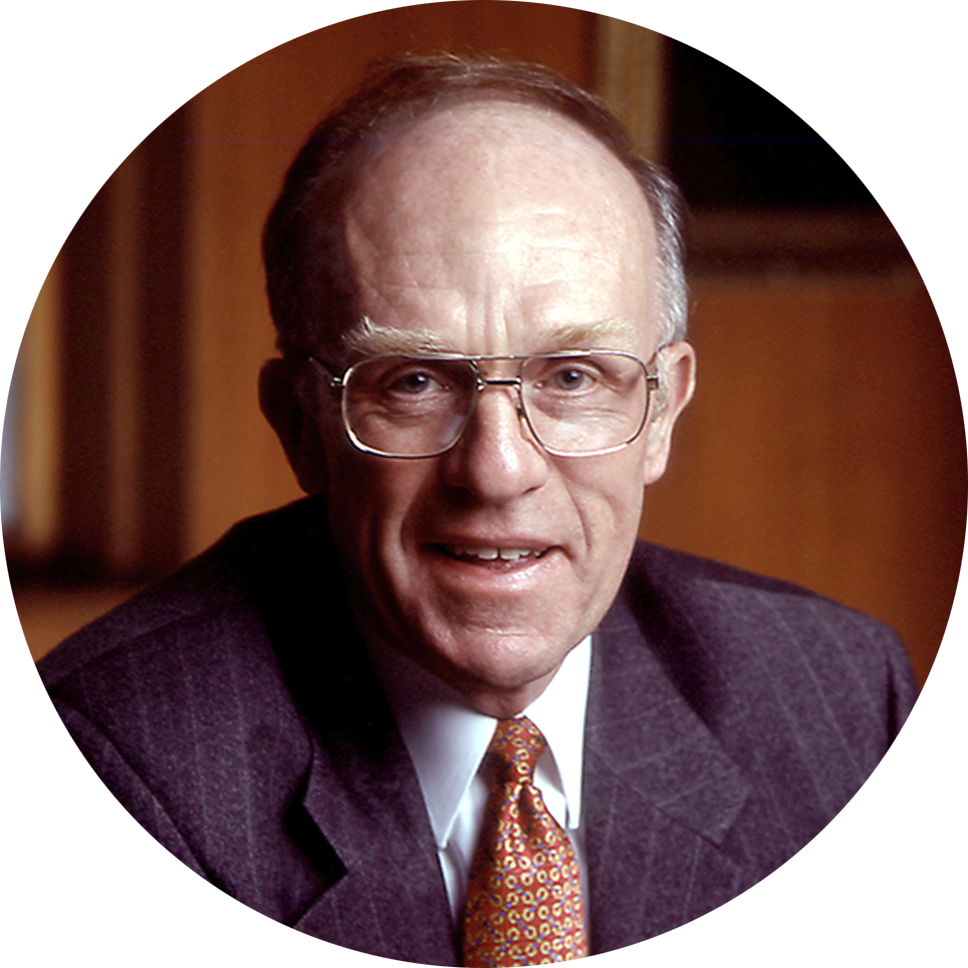
Under William M. Chace’s leadership, Emory’s sponsored research more than doubled and the university was asked to join the prestigious Association of American Universities.
Born in Newport News, Virginia, Chace grew up outside Washington, D.C. He received his bachelor’s degree in English at Haverford College before earning his master’s degree and PhD at University of California–Berkeley, specializing in James Joyce and 20th-century literature. Following a year as a Woodrow Wilson Fellow teaching at historically black Stillman College (where he was arrested during a civil rights demonstration), Chace taught for a time at Berkeley and for 20 years at Stanford University, where he served in various administrative roles before becoming president at Wesleyan University in 1988.
At Emory, Chace presided over one of the fastest-growing research universities in the country. Sponsored research increased from $118 million in 1994 to $277 million in 2002. Launching a comprehensive campus plan, completed in 1998, Emory invested roughly $1 billion in new buildings and renovations. The campus plan also transformed an automobile-congested campus into a pedestrian-friendly one, making Emory one of the “greenest” universities in the US and earning recognition from the National Wildlife Federation for its sustainable campus. Most dramatically, Emory completed the 42-acre Clairmont Campus in 2002, at a cost of $70 million, creating a hub of living, learning, and athletics connected to the main campus by alternatively fueled shuttle buses.
Chace’s administration continued Emory’s commitment to diversity, extending benefits to same-sex partners of employees and fostering inclusiveness while emphasizing intellectual achievement. Emory had the highest percentage of African American students among AAU institutions. The university also significantly expanded its holdings in literary archives through acquisitions like the papers of Nobel Laureate Seamus Heaney and the Raymond Danowski Poetry Collection. After stepping down from the presidency in 2003, Chace continued teaching English literature, dividing his time between Emory and Stanford before formally retiring from Emory in 2014.

1993–1994
Billy E. Frye
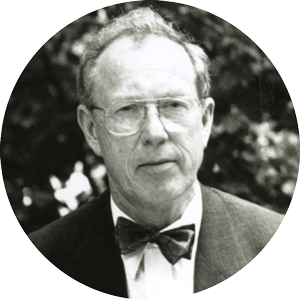
The first person ever to hold the title of provost at Emory, Billy E. Frye served as interim president for the year following President Laney’s resignation to become ambassador of South Korea and later—from 1997 to 2001—served as chancellor.
A native of north Georgia, Frye earned his bachelor’s degree at Piedmont College and completed his PhD degree in biology at Emory at the age of 23. After teaching briefly at Piedmont and the University of Virginia, he began a long career at the University of Michigan, where he eventually served as dean of literature, science, and the arts and, for six years, as provost.
Recruited to Emory as dean of the graduate school in 1986, he was named provost in 1988. Increasingly interested in the challenges faced by libraries in the digital age, Frye became a national leader in understanding new paths of library development.
His highest priority during his tenure as provost, and later interim president and chancellor, was maintaining a sense of community in the face of the university’s rapid growth. He devoted countless hours during his interim presidency to conversations with stakeholders in the Emory community, setting goals and guidelines for Emory to know itself and map its future. The document that resulted, Choices and Responsibility, was published in October 1994 and served as a blueprint for strategic thinking at a critical time in Emory's history. In 1998 President Bill Chace, acknowledging Frye’s desire to step down from the provostship, persuaded him to accept appointment as chancellor of the university, a senior advisory position, in which Frye served until his retirement in 2001.

1977–1993
James T. Laney
President Emeritus
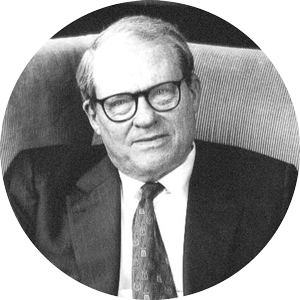
Hailing from Arkansas and educated at Yale, James T. Laney had served in the Korean War out of college and returned to Korea as a Methodist missionary following his seminary training at Yale. Five years later, finding his calling in education, he went back to Yale for his PhD degree and in two years joined the faculty of Vanderbilt Divinity School.
Emory recruited him to serve as dean of Candler School of Theology in 1969, and during the next eight years he presided over tremendous growth in the size and stature of the seminary—appointing a distinguished faculty, tripling the size of the library, enlarging the student body, and establishing innovative programs in education and training.
Capturing the attention of the university trustees, as well as benefactor Robert W. Woodruff, Laney rose to the fore as a candidate to replace President Atwood. Two years after his appointment, he announced the largest gift ever made to an American institution of education—$105 million from Woodruff and his brother George. Using both the financial and psychological leverage of the gift, Laney set the university’s sights high, hiring star professors such as Richard Ellmann, Harold Berman, and Robert Shaw; creating a program of merit scholarships and other student aid to attract the best students; significantly elevating the quality of student life; launching a new school of public health and other academic programs; eliminating millions of dollars in deferred maintenance; and starting an ambitious building program.
Aiming for membership in the Association of American Universities, Laney established goals of doubling federal research funding, increasing the number of PhD graduates, tripling annual gift support from alumni, and moving graduate programs and schools into the top 10 or top 20. The board named him president emeritus when he resigned to serve as US ambassador to South Korea from 1993 to 1996.

1963–1977
Sanford S. Atwood
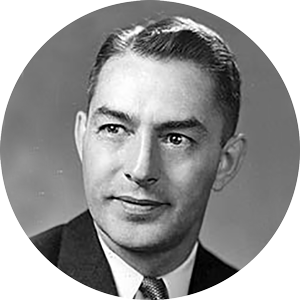
Sanford S. Atwood was president when Emory faculty member Thomas Altizer sparked the “Is God Dead?” controversy, as it was described by Time magazine. Atwood defended Altizer’s academic freedom, raising Emory’s prestige in the process.
A plant cytologist who earned all of his degrees at the University of Wisconsin, Atwood was provost of Cornell University when he was appointed Emory’s president in June 1963. Determined to raise the university’s profile nationally, he immediately set about planning a $25 million capital campaign, which succeeded in bringing in $35 million. The initiative got off to a rocky start when Time magazine profiled several theologians who styled themselves as Christian atheists. The magazine cover asked in bold letters, “Is God Dead?” One of the theologians was Altizer. When Atwood and board chair Henry Bowden stood by Altizer and academic freedom, that act alone raised the stature of the university nationally.
Atwood presided over the greatest diversification of the campus to that point. The university had integrated the year before his arrival; symbolically, he invited Emory’s first African American commencement speaker (Benjamin Mays) and first woman commencement speaker (Rosemary Park). He himself was the first non-Methodist president of Emory (Presbyterian). Atwood established commissions on the status of women and the status of minorities, launched the university’s first affirmative action plan, and created the Employee Council to give staff a voice in governance.
His administration doubled the size of the faculty and grew the student body by 63 percent. Additions to the campus included a new gym at Oxford, the first buildings of Yerkes National Primate Research Center, a new nursing school building, Woodruff Library, sorority lodges, a new dental school building, a rehabilitation hospital, a new law school building, the Woodruff Health Sciences Center Administration Building, White Hall, and the chemistry center, which would later be named for him. When he retired in 1977, the mood of the country was bleak, but he told the trustees, “I am certain Emory is destined to be one of the great universities of this country.”

1957–1962
S. Walter Martin
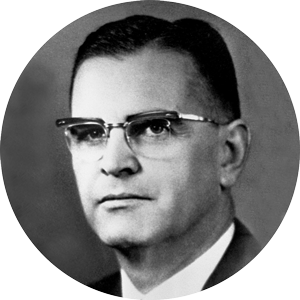
Under S. Walter Martin’s tenure, Emory acquired Lullwater Estate from the Candler families, and the Charles Howard Candler Professorships were established.
Only the third presidency since Emory’s move to Atlanta, Martin’s was a brief hiatus from his career at public universities. A native of Georgia, he earned a doctorate in history at the University of North Carolina–Chapel Hill, taught high school briefly, then moved to the University of Georgia (UGA), where he eventually became dean of Franklin College of Arts and Sciences. He had spent half his life at UGA when Emory came knocking.
The differences between public and private universities at that time, especially in areas of funding, may have hampered Martin’s achievements. Serving at a time of great upheaval over integration of public education in the South, Martin found himself caught between the progressive impulses of the faculty and student body and the more conservative leanings of the board. Nevertheless, his five-year presidency saw the expansion of the physical plant, the establishment of the Candler Professorships, and the acquisition, in 1958, of the 185-acre estate of Walter Candler 1909C. That estate, called Lullwater, would become the home of the university president in 1963 and, in time, a preserve open to the public. Portions of the acreage would be carved out for construction of the Atlanta VA Hospital and the Yerkes National Primate Research Center. Martin resigned from Emory in 1962—the year of Emory’s integration—to become vice chancellor for academic affairs of the University System of Georgia and later president of Valdosta State University.

1942–1957
Goodrich C. White
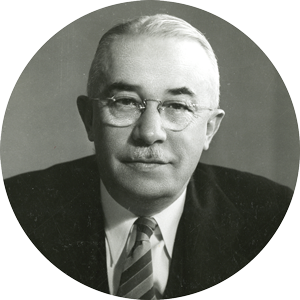
Leader during a time of great growth, Goodrich C. White oversaw the university’s awarding its first doctorate and becoming coed. Emory acquired the Yerkes Regional Primate Research Center from Yale, and the Centers for Disease Control and Prevention in 1947 made a token payment of $10 to Emory for 15 acres of land on Clifton Road next door to Emory.
However much transformation President Cox wrought, his successor would multiply it. White graduated from Emory College and earned a master’s degree in psychology from Columbia University before teaching at Kentucky Wesleyan and Wesleyan (Macon). He returned to Emory in 1914 and stayed for the rest of his life, except for a year in the Army Medical Corps during World War I and a leave to earn his PhD degree at the University of Chicago.
Appointed dean of Emory College and later dean of the graduate school, he was tapped to be Emory’s first vice president in 1938, as the university grew increasingly complex. He succeeded President Cox in 1942. Steering the institution through periods of tremendous strain, he dealt with the disruptions of World War II, the student drain caused by the Korean War, the flood of new students brought on by the GI Bill, and the opening of the campus to women residential students. The building program was staggering: six classroom buildings, five residence halls, a hospital addition, a new student center, a research building, the Administration Building, The Emory Clinic, several fraternities, and Emory’s first parking deck in a period of 11 years.
The academic program also gained strength: Emory tripled the size of the faculty, launched its first PhD programs, and acquired an existing dental school. During White’s administration, Emory began to emerge onto the national scene. He was elected president of the United Chapters of Phi Beta Kappa, the first Southerner to serve in that position, and also served as the only Southerner on President Harry Truman’s Commission on Higher Education. A champion of education for African Americans, he nevertheless resisted calls for integration of Emory and retired before the issue came to a head.

1920–1942
Harvey Warren Cox
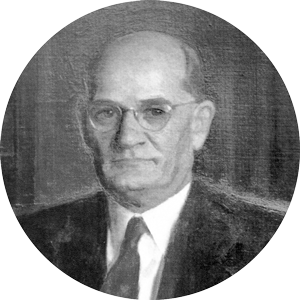
With Harvey Warren Cox at the helm, Emory opened the Junior College at Oxford (now Oxford College), and Phi Beta Kappa installed a chapter on campus.
When Emory University was chartered in 1915 and planted in Atlanta, the trustees called on former Emory president Warren Candler to lead the institution. As a senior bishop of the Southern Methodist Church, he had chaired the Educational Commission charged with establishing the new university, so he moved easily into the role of chancellor. The title was borrowed from Vanderbilt University, the church’s erstwhile partner from which it had just split. By 1919 Candler was feeling the strain of full-time church leadership and full-time building of a new university and begged relief from the chancellorship. The board went searching for a president.
The first person from beyond the South to lead Emory hailed from the Midwest. Born and reared in Illinois, Cox earned a bachelor’s degree from Nebraska Wesleyan, a master’s degree from Nebraska, and a PhD degree in philosophy from Harvard. He taught at the University of Florida and, during World War I, managed the Southeastern operations of the Student Army Training Corps (forerunner of ROTC). He brought to Emory a brilliant gift for organizing and a meticulous attention to financial matters. He insisted on balanced budgets in all the schools and declared that no new building would be constructed until additional endowment could support its operation.
During his administration, the Oxford campus was converted to a combination prep school and junior college; another two-year campus was opened in Valdosta, Georgia; the university’s hospital, which had been opened as an independent, Methodist-supported hospital in 1905, was moved from downtown Atlanta to the Druid Hills campus; an existing school of nursing was merged with the university; and Atlanta’s Carnegie Library training school was incorporated into Emory’s graduate school.
In 1926 the Cox administration launched the largest fundraising campaign in Georgia to that time, aiming to raise $10 million in 10 years and to add significantly to the endowment and the physical plant. The effort was sunk in 1929 by the onset of the Great Depression, which also hit the campus hard in other ways: student enrollment dropped, expenditures were cut, and faculty salaries were reduced. Despite financial hardships, the 22 years of the Cox administration witnessed the construction of Emory University Hospital, Candler Library, Harris Hall, Glenn Memorial, half a dozen residence halls and fraternity houses, and significant infrastructure for the still-new campus. Burdened by a series of illnesses, Cox retired in 1942 and died two years later.

1902–1915
James Edward Dickey
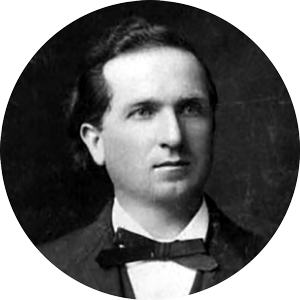
When James Edward Dickey was named president of Emory, he had no inkling that his would be a transitional presidency of great moment, from 19th-century Oxford to 20th-century Atlanta. Having entered Emory College at the ripe age of 23, he stayed on after graduation to teach mental and moral science before leaving to serve a Methodist church in Atlanta.
Called as Emory’s president in 1902, he set about putting the house in order—wiping out the debt on the library; increasing enrollment to more than 300 for the first time; growing the endowment by more than 50 percent (to $325,000 by the time he left office); constructing a new science building in 1904 (Pierce Hall, the first building in Oxford with gas, steam heat, and running water); and building a new gymnasium in 1907 (now Williams Hall, reputed to be the finest gym in the South when it opened). The college also built its first dormitory since before the Civil War—Haygood Hall, in 1912—to get students out of boarding houses and deteriorating co-op housing in the town. One blot on Dickey’s administration was the dismissal of Professor Andrew Sledd, whose anti-lynching article in The Atlantic in 1902 had stirred public ire against the college.
When the trustees voted to make Emory College part of the new university being formed in Atlanta in 1914–1915, Dickey returned to the Methodist ministry and eventually was elected a bishop. Emory College would remain in Oxford for four more years before moving to the Atlanta campus.

1898–1902
Charles E. Dowman
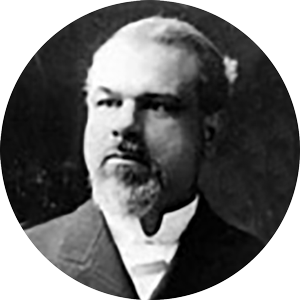
Born in Kent, England, Charles E. Dowman immigrated to America as a child and graduated from Emory into the Methodist ministry. He served churches in Florida and North Georgia before returning to Emory in 1882 to teach foreign languages. Although he was a popular teacher, he left after six years to return to the ministry.
Elected to succeed Warren Candler as president in 1898, Dowman set about clearing the curriculum of more “practical” disciplines—preaching, technology, law—and enriching the traditional academic programs. He made the master of arts degree more rigorous, requiring a residency and course of study. Aiming to raise academic standards overall, Dowman encouraged the faculty to develop common entrance requirements with Mercer College (now Mercer University) and the University of Georgia. His administration introduced elective courses (1899) as well as the first athletics requirement—two hours in the gym each week.
The Dowman administration grew the endowment to $203,000 while also raising funds for a new science building that was constructed after his departure.

1888–1898
Warren Akin Candler
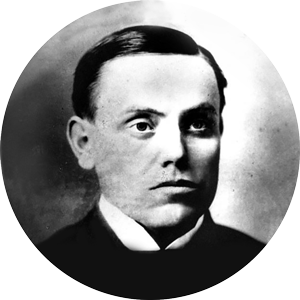
The prodigious Warren Akin Candler was among the most influential persons in Emory’s history. Only 19 when he graduated from Emory, he brought high intelligence, ambition, energy, and a prolific pen to the Methodist church, which he served as a minister and very soon as an editor in the church’s publishing house in Nashville.
At age 31, he took a pay cut to assume the Emory presidency, where the influence of his 10-year administration would be felt well into the 20th century. His conviction of the moral evil of intercollegiate athletics stamped the trustees’ policies for decades, but his support of “a healthy mind in a healthy body” led him to start perhaps the first organized intramural program in the country.
He raised academic standards, diversified the curriculum, and added a formal theology department to the college. His administration brought a rise in faculty salaries and improved facilities, including construction of the college’s first freestanding library (now Candler Hall). Under his encouragement, Emory’s first international students enrolled (the fruits of Methodist missionary activity in Korea and China). Challenged by economic recessions in 1892 and 1897, Candler harangued wealthy friends of the college to do more philanthropically, noting that Harvard College was worth more than all the Methodist colleges in the South together.
Candler was elected bishop in 1898 and resigned the presidency, but he remained close to the college. His older brother Asa, founder of The Coca-Cola Company and the wealthiest man in Georgia, had joined the board of trustees; and when the Southern Methodist Church decided in 1914 to charter a new university, Asa gave a million dollars to establish it in Atlanta. Warren was tapped to be the first chancellor of the new university, which would be named Emory. He served in that role for five years until Emory College was successfully moved to the new campus, even while he continued his full-time work as a powerful senior bishop of the Southern Methodist church.

1884–1888
Isaac Stiles Hopkins
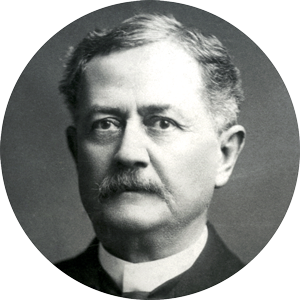
Graduating from Emory with Atticus Haygood, Isaac Stiles Hopkins earned his medical degree from the Medical College of Georgia in two years but served in the ministry for eight years before being called to the faculty of Emory in 1869. Appointed to teach natural sciences, he was soon teaching Latin also, and he later took responsibility for English literature as well.
His real passion may have been what he termed “toolcraft and design”—a hobby of woodworking and mechanical tinkering that grew into an academic discipline. Convinced that Southern young men could industrialize their region and build an economy modeled on that of the North, Hopkins persuaded President Haygood and the trustees to introduce a department of technology, the first of its kind in Georgia. In 1884 the building now known as Hopkins Hall on the Oxford campus was constructed to house the new department.
Soon enough, the experiment attracted the attention of the state, and Hopkins was recruited away from Emory to become the founding president of Georgia Institute of Technology. During his presidency of Emory, representatives of the alumni association for the first time gained seats on the board of trustees.

1875–1884
Atticus Greene Haygood
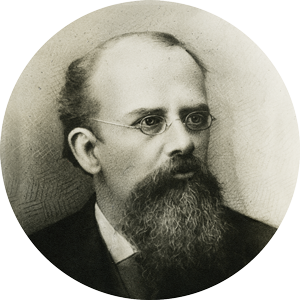
The youngest member of his class when he entered Emory, Atticus Greene Haygood kept tabs on his expenses along the way and calculated he had spent $915.40 for his Emory degree—$15 of which he was sure had been stolen. A lifelong doubter of orthodoxy, he nevertheless entered the Methodist ministry and served as a Confederate army chaplain. After the war, Haygood rose quickly to the influential position of secretary of the Sunday School Association and was serving in that capacity when the Emory presidency beckoned.
Progressive in his views about education, race, and philosophy, Haygood achieved national fame in his 1880 Thanksgiving sermon, titled “The New South.” In it his spirit of national reconciliation, embrace of a new day for the South, and openness to “new light” shone forth. Haygood published the sermon and caught the attention of a Brooklyn banker named George Seney, the son of a Methodist minister, who decided to support the little Methodist college. Seney helped wipe out Emory’s debt and paid for an administration building that bears his name today.
Haygood’s presidency built up the college library, introduced instruction in modern languages, created co-op housing for students, launched a law department, and required a thesis for the master of arts degree. Haygood was the first Emory faculty member elected to the American Academy of Arts and Sciences.
Despite fundraising success, the recession of 1883 hit the endowment hard, and Haygood himself resigned from the presidency in deep personal debt. He left Emory in 1884 to direct the Slater Fund, a Northern philanthropy to support schools and colleges for African Americans. His motto is chiseled into the gate at the entrance to Emory’s Atlanta campus: “Let us stand by what is good and make it better if we can.”

1871–1875
Osborn L. Smith
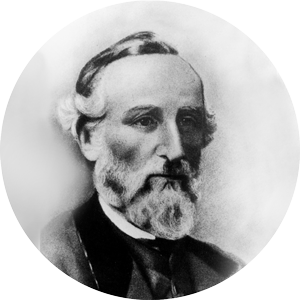
A firm believer in the theological doctrine of human depravity, Osborn L. Smith found ample evidence of it in a long career of teaching. After graduating from Emory, he served as principal of a high school before joining the Emory faculty in 1845 to teach Latin. Leaving for Wesleyan College in 1850, he taught languages there and served as Wesleyan’s president from 1854 to 1859. During the Civil War, he served in the Georgia legislature and afterward he entered the ministry.
While pastoring a church in Columbus, Georgia, he received the call to become Emory’s president and professor of Latin. His four-year presidency straddled one of the more severe economic downturns in the nation’s history, creating immense financial difficulties, and the college’s endowment never rose above $18,000 during his term. Nevertheless, with the fundraising help of former president and now bishop George F. Pierce, the college was able to construct four new buildings during Smith’s administration. Graduates during his presidency included two future presidents of Emory, a future justice of the state supreme court, and a future dean of Columbia Law School.
Frustrated by the college’s financial straits, Smith returned to the faculty in 1875 and died two years later walking home from class. One student, Harry Harlan Stone (later the college librarian), recalled being the last student called on by Smith to recite: “I gave a most beautiful translation, but failed to parse a single line correctly. He dropped dead as he went home, and the boys always insisted that my recitation was too much for him.”

1867–1871
Luther M. Smith
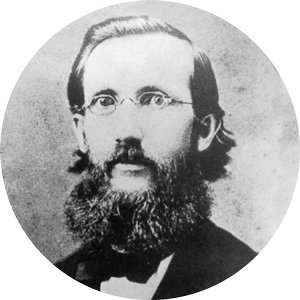
Luther M. Smith was the first Emory graduate to serve as president of the college, and in that way his presidency marked a coming of age for Emory. Born in Oglethorpe County, he graduated at the top of his college class. After studying law, he practiced briefly before returning to Emory in 1852 as a tutor in languages.
Elected president in 1867, he followed the tradition of his predecessors in teaching moral philosophy. Even more, he fostered a campus religious life that emphasized the “character-building” qualities of college. He sought to expand the curriculum beyond the traditional rote study of the classics and natural sciences. Convinced that the college needed a half-million-dollar endowment to flourish, he launched a fundraising drive, though it fell far short of success. Vexed by what he considered the small imagination of the trustees, he took them to task for their failure to attend to the college’s financial needs.
Early in Smith’s administration, the board first considered moving Emory College to Atlanta, when a new trustee, the Rev. G. J. Pearce, made the suggestion. It was voted down after “deliberate judgment that the further consideration of the measure proposed is unadvisable.” Whether it was differences over finances or the curriculum or both, the board voted Smith out of office in November 1871 and replaced him with Osborn L. Smith, who was not related to Luther.

1855–1867
James R. Thomas
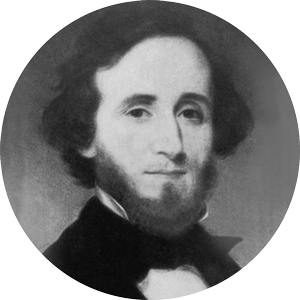
A native Georgian, James R. Thomas graduated from Randolph-Macon College and taught at Wesleyan College before his election to Emory’s presidency. In debt since its founding, the college began to right itself under Thomas’s leadership, and with enrollment reaching 244 in 1860, Thomas balanced the budget for the first time in the college’s history.
Within months, however, Emory’s fortunes sank as the nation came apart during secession and the start of the Civil War. When the trustees met on July 17, 1861—just days before the First Battle of Bull Run—they lacked a quorum. Meeting in November, they found the college without students or funds to continue, and they voted to close the college until “peace shall take the place of the present public agitation.” During the next four years the campus buildings were used to store cotton and, after the Battle of Atlanta, to house wounded and dying soldiers. Equipment and books were stolen, and the endowment evaporated in Confederate bonds.
Despite Emory’s bankruptcy, Thomas and two other faculty members petitioned the board to reopen the college, and in January 1866, some 20 students began their studies. Georgia provided funds for indigent wounded Confederate veterans, and in 1866–1867 enrollment climbed to 120. Nearly half the college’s $3,300 in income that year was from the state. The president’s salary was $631, and the college ended the year with a surplus of $31.32. Worn by his labor and despondent over the plight of the South, Thomas decamped for California in 1867 to become president of Pacific Methodist College in Vacaville.

1854–1855
Alexander Means
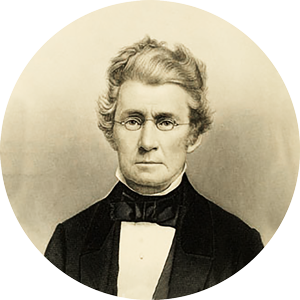
Polymathic and energetic, Alexander Means began his career as a schoolteacher in Georgia but followed his immense curiosity into medicine, electronics, poetry, and ministry. The two great interests in his life—science and religion—came together in the third, education. When the Georgia Methodists established their Manual Labor School in 1834, they turned to Means to be the school’s first superintendent, a position he held until his appointment as professor of natural sciences in Emory College in 1838, the first year of instruction.
Means pursued his scientific studies by traveling to England to consult with Michael Faraday and lecturing in chemistry at Augusta Medical College simultaneously with his appointment at Emory. As president of Emory, he proposed that the college assume the property and charter of Oglethorpe Medical College, which was then a school of Oglethorpe University; the trustees declined. In his second semester as president, he petitioned the board for permission to teach in the newly formed (1854) Atlanta Medical College.
The trustees quickly grew dissatisfied with the arrangement, and Means resigned his Emory professorship as well as the presidency. He continued to alternate his teaching between the medical colleges in Atlanta during the summer and Augusta during the winter, while maintaining his residence at the oldest home in Oxford, Orna Villa. He returned to Emory to teach for a short time after the Civil War. He was the first Emory faculty member elected to the American Association for the Advancement of Science.

1848–1854
George Foster Pierce
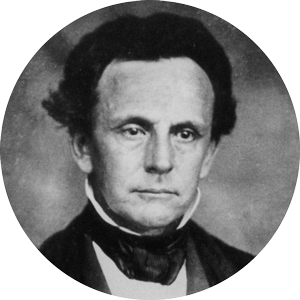
Possessed of a keen and ready wit, George Foster Pierce carried on the work of building Emory by the same force of personality that had marked Longstreet’s presidency. Born in 1811, he graduated from Franklin College of the University of Georgia and was the only college graduate among the ministers of the Methodist Georgia Conference when he was ordained in 1831.
Eight years later he was elected president of what is now Wesleyan College in Macon, the first four-year college in the world chartered to offer undergraduate education exclusively to women (it was chartered in 1836, the same year as Emory College). He urged the church to step boldly into the realm of education, “where opinions are formed and character molded.” Otherwise, he feared, the church would “grow imbecile, effete, . . . bigoted, ignorant, [and] superstitious.”
His stint at Wesleyan lasted only a year before he went back into the ministry, but Emory called in 1848. The college was deeply in debt and lacked adequate facilities. Working hard to float the budget—once taking only three-quarters of his $1,600 annual salary—Pierce campaigned throughout the state to raise endowment and operating funds.
In 1853 the college dedicated its first building not made of wood (at a cost of $15,000), and although the college was several thousand dollars in debt, the endowment totaled $12,000. After his election as bishop in 1854, Pierce continued to raise funds for buildings that still stand at Oxford, including Language Hall (1874), the Chapel (1875), and Humanities Hall (1875).

1840–1848
Augustus Baldwin Longstreet
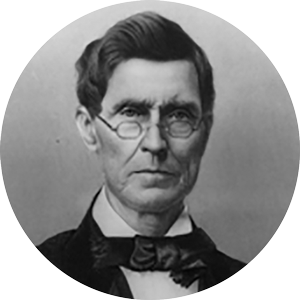
In search of a new president after just three years, the Emory College trustees must have felt blessed by providence when they found someone whose fame far exceeded that of their school and whose professional experience included the law, politics, newspapering, farming, and fiction writing—though not much teaching or educational leadership.
Augustus Baldwin Longstreet (uncle to Robert E. Lee’s corps commander James Longstreet) was born in Augusta, Georgia, in 1790, and after graduating from Yale College he joined the Georgia bar. Drawn to public life, he was elected to the Georgia legislature but soon cut a wide swath throughout the Southeast. His newspaper, the State Rights Sentinel, became an influential harbinger of secessionist debates. His lasting fame came from a book called Georgia Scenes, in which he showed himself to be a natural observer of human behavior and an accomplished raconteur along the lines of the later Mark Twain.
Entering the ministry in 1838, Longstreet was serving a Methodist church in Augusta when Emory College called. He succeeded in enlarging the profile of the young college, which soon rivaled the older University of Georgia in reputation and numbers of students. When the Methodist Episcopal Church split into Northern and Southern factions in 1844 over the issue of slavery, Longstreet’s intellectual leadership of the Southern church helped to make Oxford and Emory the center of Southern Methodism for the next 30 years. He left Emory to become president of Centenary College in Louisiana and later served as president of the University of Mississippi.

1836–1839
Ignatius Alphonso Few
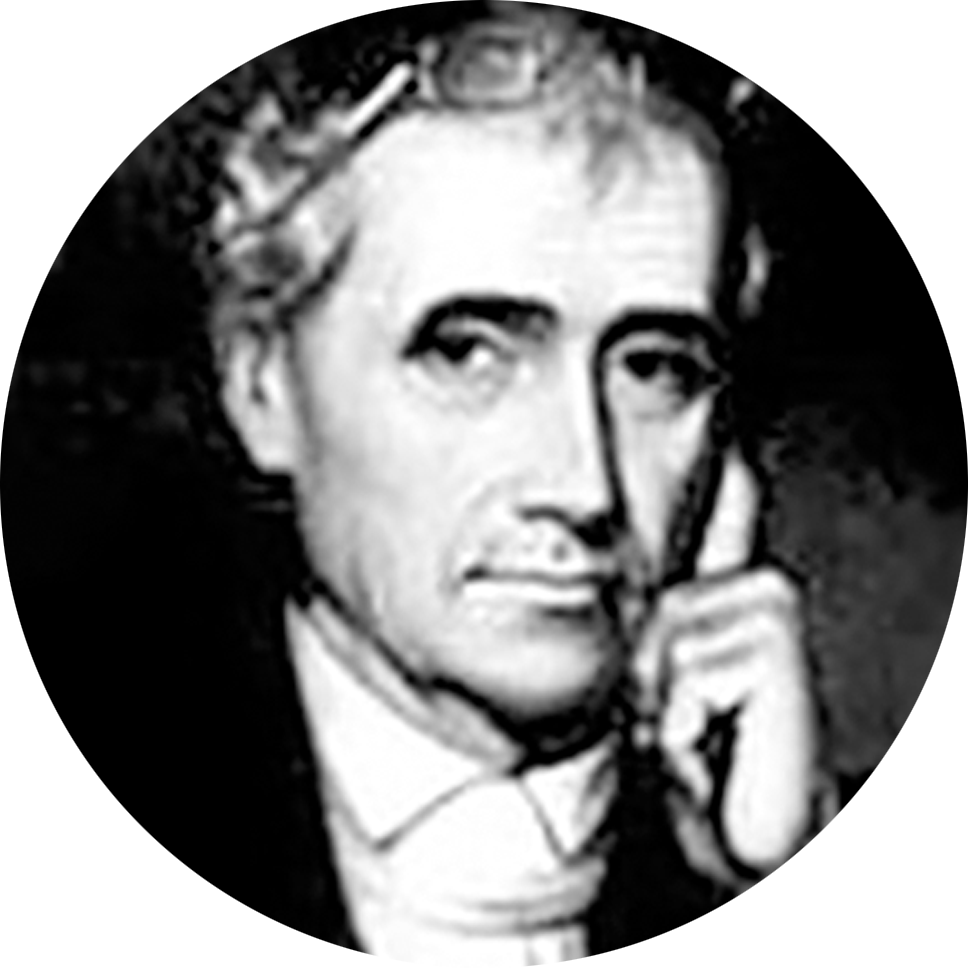
Born near Augusta, Georgia, in 1789, Ignatius Alphonso Few studied briefly at Princeton before returning to Georgia to take up farming. Friends and colleagues would comment, after his death, that Few had no head for money, and indeed his absorption in the study of philosophy distracted him from the business of the farm, which he lost. Turning to the law, Few had a successful legal practice until converting from agnostic skepticism to Christianity and entering the Methodist ministry in 1828.
In 1834 the Georgia Conference of the Methodist Episcopal Church, impressed by Few’s intelligence and leadership, tapped him to lead the development of a school in Covington, Georgia, and within two years he had persuaded the Methodists to launch a college as well. When Emory College was chartered on December 10, 1836, Few’s fellow trustees named him president, and he set about securing funds to build the college in the newly laid-out town of Oxford. Garnering pledges of financial support, Few and the board unwisely used those pledges as collateral to borrow funds for construction; the recession of 1837 left the college bankrupt.
Overwhelmed by the burden of his work and by the tuberculosis that would claim his life, Few resigned in July 1839. He continued to serve as president of the board of trustees until July 1841, and he died in November 1845. By curious circumstance, Few was distantly related to the greatest Emory benefactor in its first hundred years, Asa Griggs Candler, the founder of The Coca-Cola Company.
